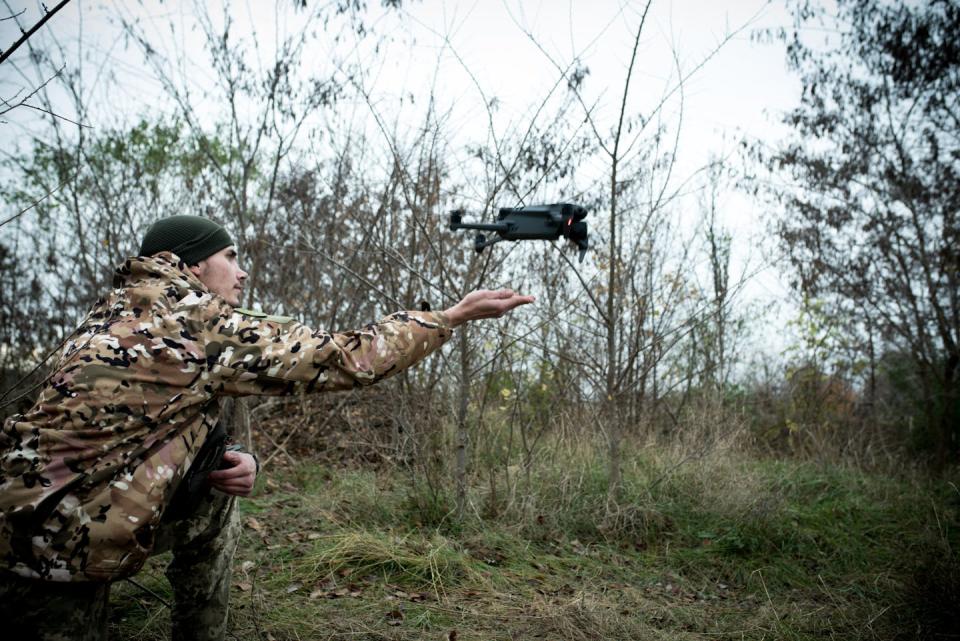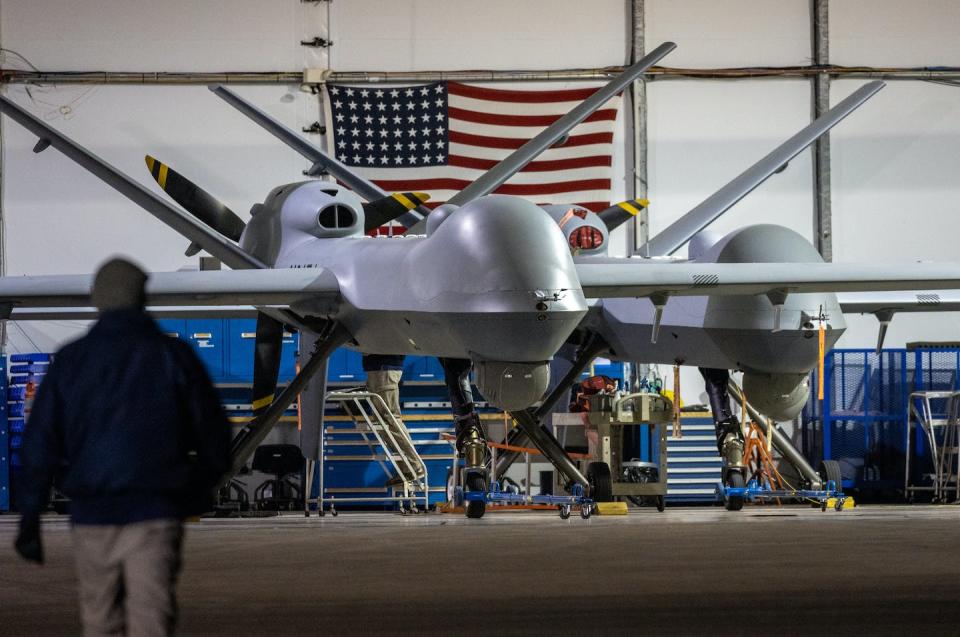Violent explosions shake the evening sky. The streaks of light look like comets. Missiles are raining down. Below, people are scrambling to hide. The wounded are carried on stretchers, the dead are buried.
This is daily life in Ukraine, where pilotless vehicles known as drones fill the skies in an endless video game-like – but actually very real – war with Russia.
Both Russia and Ukraine are using drones in this war to remotely locate targets and drop bombs, among other purposes.
Today, drones are used in a variety of other conflicts, but they are also used to deliver packages, monitor the weather, drop pesticides, and entertain drone hobbyists.
Welcome to the world of drones. These range from small consumer quadcopters to remote-controlled fighter jets, and all types are used by militaries around the world.
As a public diplomacy and foreign policy expert and a former U.S. secretary of state for public diplomacy and public affairs, I know how important it is for people to understand drones and their proliferation, given the risks of war, terrorism, and accidents. Drone conflicts in the world today.

A buying spree
The United States is among more than 100 countries that use drones in times of conflict.
Terrorists have also been known to deploy unmanned aerial vehicles because they are relatively low-cost and highly damaging weapons to civilians.
Worldwide consumer drone shipments exceeded 5 million units in 2020 and are expected to exceed 7 million by 2025.
Worldwide drone sales increased 57% from 2021 to 2022.
With the exponential increase in drone purchases, there are very few restrictions for buyers, creating a wild, wild west of uncontrolled access and use.
Each country is free to decide when and where to fly drones, without responding to any other country or international authority that governs drones. The skies are often filled with swarms of drones and there is little guidance on the ground about the rules of the sky.
different purposes
Each country has its own interest in acquiring and using drones.
China is increasingly using advanced drones for covert surveillance in international waters, particularly to patrol disputed islands in the South China Sea. The expanding drone program has influenced other countries, such as the United States, to invest more in the technology.
The Turkish military has the Bayraktar TB2, a highly advanced unmanned aerial vehicle that can carry a laser-guided bomb and is small enough to fit on a flatbed truck.
The United Arab Emirates is importing drones from China and Turkey to be deployed in Yemen and Libya to monitor warlords in case of conflict.
And South Korea is considering establishing a special drone unit after North Korea failed to respond to its latest drone strike. When North Korea deployed five drones against its southern neighbor in December 2022, South Korea had to scramble warplanes to fire warning shots.
There are no rules in the air
Countries with armed drones operate individually under their own rules rather than agreed upon international regulations.
International law prohibits the use of armed force except when the United Nations Security Council authorizes an attack or in self-defense.
But short of waging a full-blown war, drones can be legally deployed for counterterrorism operations, surveillance and other non-self-defense needs, creating a slippery slope to military conflict.
It is difficult to determine national and international rules of the sky for drone use.
Experts have tried for 20 years to forge international agreements on weapons, and some countries supported an unofficial 2016 UN agreement recommending countries document imports and exports of drones.
But these efforts never translated into serious, comprehensive standards and technology-keeping laws. There are several reasons for this: Governments do not want to publish drone data to protect their national sovereignty. They also want to prevent duplication of their technology and maintain their market share in the drone business.


USA and drones
For decades, the United States has grappled with how to balance drone warfare as it has been involved in overseas operations in Iraq, Afghanistan, Syria and other conflict zones.
The USA killed a senior Al Qaeda leader with a drone attack in Afghanistan in 2022.
However, there have been other drone attacks that have caused unwanted deaths and damage.
In 2021, The New York Times reported that a US drone strike on a vehicle thought to contain an Islamic State bomb resulted in the deaths of 10 children, not three civilians as the US said might have happened.
There is little public research on what Americans think about the use of UAVs abroad, making it difficult to build public support for their military use.
Drone dangers
Drone dangers are real. Many drone experts, including myself, believe that as the technology continues to evolve, it is unsafe for each country’s military to make their own decisions about drones, with no rules regarding drone transfers, exports, imports and use, and without a major forum to discuss drones .
Multiple drones can communicate with each other remotely, creating common goals rather than an individual drone path or pattern. Like a swarm of bees, these drones form an accident-prone, lethal and autonomous air army.
With the advent of artificial intelligence and more advanced unmanned aerial vehicles, drones can change speed, altitude, and targeting in seconds, making them even more difficult to track and investigate. Attacks can occur suddenly.
In my view, the world needs new and consistent rules on drone use in the next decade: better international monitoring of drone attacks and greater transparency in the consequences of drone attacks.
Information about the impact of military use of drones is important not only for historical purposes, but also to mobilize societies and reduce the incentive to engage in conflict. It’s time to talk seriously about drones.
This article is republished from The Conversation, an independent, nonprofit news organization providing facts and authoritative analysis to help you understand our complex world. Written by: Tara Sonenshine, Tufts University
Read more:
Tara Sonenshine does not work for, consult, own shares in, or receive funding from any company or organization that would benefit from this article, and has disclosed no relevant affiliations beyond her academic duties.